Cargill Reports Encouraging Results from 6-Month Sail Test on Bulker
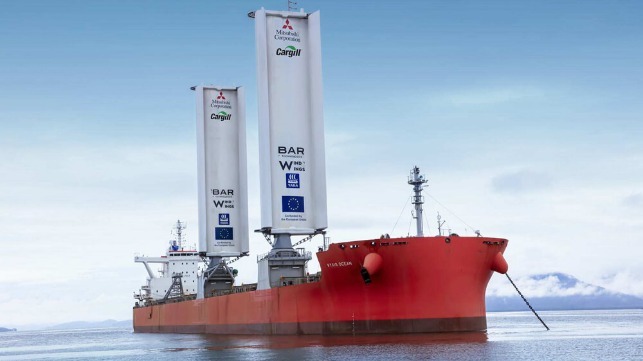
Cargill Ocean Transportation, the ocean shipping arm of the commodities giant, is reporting encouraging results largely in line with projections after the first six months of testing of wind-assisted propulsion aboard a Kamsarmax bulker. Data from the Pyxis Ocean (81,000 dwt) will be used according to Cargill to inform the potential scale-up across the fleet and industry as well as providing learning to further improve the design, operation, and performance of the solid sail technology.
After a partnership that began in 2019 to develop the wind technology, Cargill working with UK-based start-up BAR Technologies moved forward with the first installation of the sails on the 751-foot (229 meter) vessel completing the work in Shanghai in August 2023. The vessel built in 2017 was retrofitted with two 150 feet (37 meter) rigid sails made of a compositive material not unlike the blades for wind turbines.
During the first six months, the vessel which is owned and operated by MC Shipping, a division of Mitsubishi, has completed three voyages. It crossed the Indian, Pacific, and Atlantic oceans, sailed around Cape Horn and the Cape of Good Hope, and encountered all types of weather.
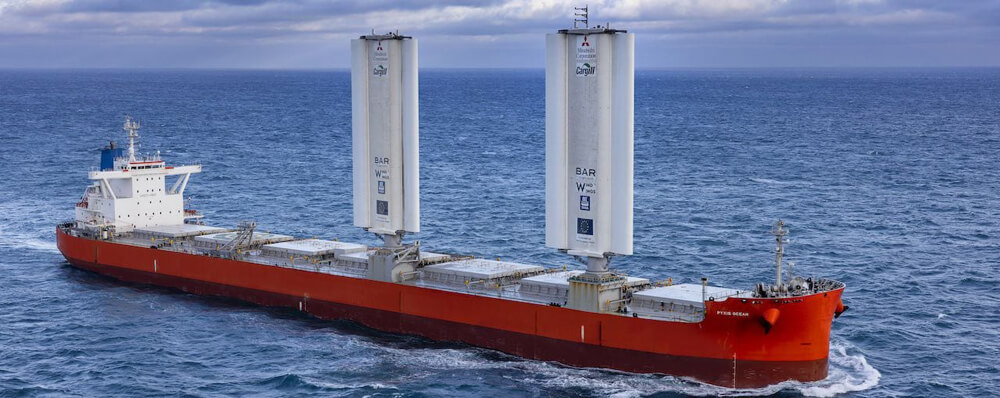
BAR Technologies and Cargill estimated the vessel would achieve an annual average saving of three tonnes of fuel per day, which equates to 11 tonnes per day of CO2 on a well-to-wake basis. This equates to roughly a 14 percent saving for the Pyxis Ocean and they report in the first six months the vessel has been within 10 percent of predictions. During optimal sailing conditions, the Pyxis Ocean achieved a saving of more than 11 tonnes per day in fuel consumption which translates to 41 tonnes per day less CO2 emitted well-to-wake or a 37 percent emissions savings.
“We are encouraged by the results and have learned a great deal about implementation wind-assisted propulsion on dry bulk vessels,” said Jan Dieleman, president of Cargill’s Ocean Transportation business.
The technology is controlled by a touch panel on the bridge and fully automated once the sails are raised. They can be folded down for safety and securing handling as well as during port arrival, departure, and operations. When deployed, sensors constantly measure the wind, and the sails self-adjust to the optimal configuration.
Captain Suraj Vaidya of the Pyxis Ocean highlights that the concept is to lower the engine power using wind energy to maintain speed at lower power and fuel consumption levels. He also recounted a unique use of the sails when they were monitoring a North Atlantic storm.
“We deployed our sails and were able to capitalize on that strong wind coming from Canada,” Captain Vaidya recalls. “We outsailed the storm. On a different ship, the voyage to the English Channel would have taken an extra day or more. With the sails, the Pyxis Ocean maintained very good speed and safely entered the English Channel just ahead of the storm.”
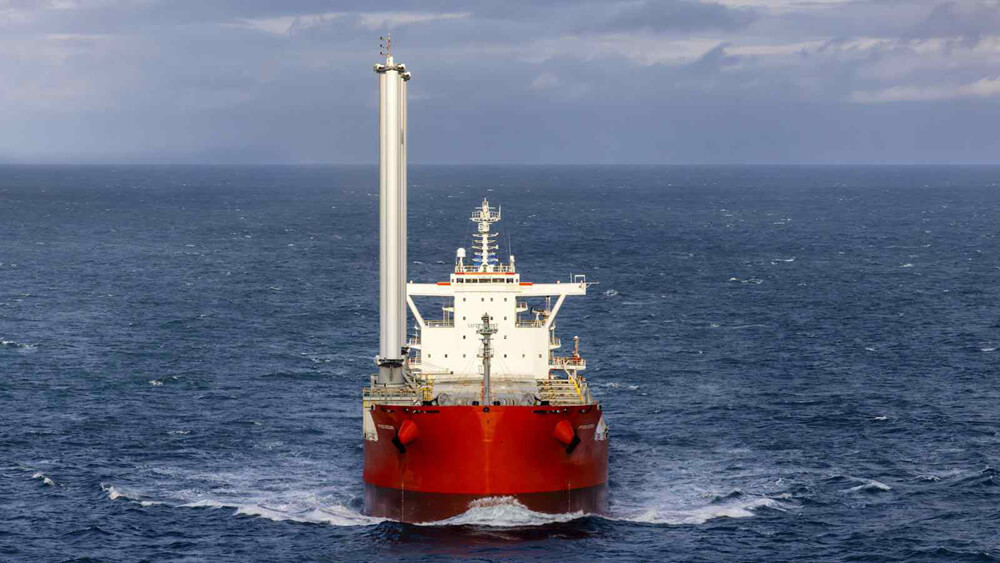
The early voyages have provided insight into more than just the application of the sails on a vessel, it has also highlighted broader logistical challenges in the global maritime system. Given that every port, terminal, and berth is different, the companies said their involvement is critical towards integrating Wind Assisted Propulsion (WAP) technology into the global maritime system on a wider scale. Cargill says it has worked with more than 250 ports worldwide calling the response encouraging.
“The results of the Pyxis Ocean’s first voyage with WindWings installed clearly demonstrate that wind-assisted propulsion can secure significant fuel savings and emissions reduction,” said John Cooper, BAR Technologies CEO. He explains that while the Pyxis Ocean has two WindWings, they anticipate the majority of Kamsarmax vessels will carry three wings, further increasing the fuel savings and emissions reductions by a factor of 1.5.
Cargill says it will continue the testing and experimenting of operational, technical, and commercial aspects of the Pyxis Ocean to incorporate the maximum amount of learning into the potential design of future installations before scaling up. Wind-assisted propulsion and the wing sails are just one of several steps Cargill is exploring in its effort to decarbonize operations. The group in partnership is also moving forward with the construction of some of the first methanol-fueled dry bulk carriers and inland in Europe deployed an electric pusher tug and barge.
Union Maritime Adds Wind-Assisted Propulsion to New LR2 Tankers
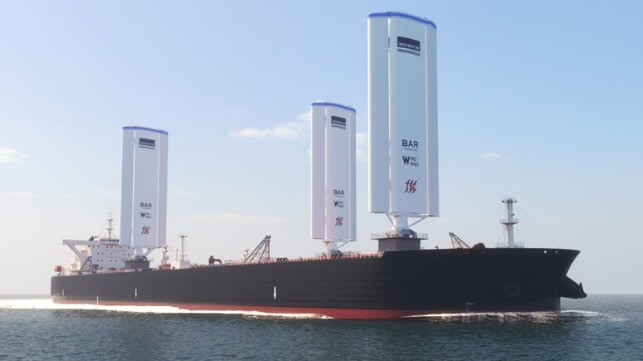
UK-based Union Maritime has ordered the installation of rigid wing sails for two of its new build LR2 tankers putting the company at the forefront of the development of wind-assisted technology in the larger tanker sector. So far, most of the applications of wind-assisted propulsion have come in the bulker and smaller ship segments but interest in the industry remains high to find near-term technologies that will contribute to decarbonization.
The new tankers, under construction at Shanghai Waigaoqiao Shipbuilding (SWS) yard in China, will each feature three WindWings developed by BAR Technologies and are being billed as the “greenest and most efficient long-ranger tankers,” in the industry. BAR reports that the rigid sails have the potential to save up to 1.5 tonnes of fuel and around 5 tonnes of CO2 per wing per day on typical global routes.
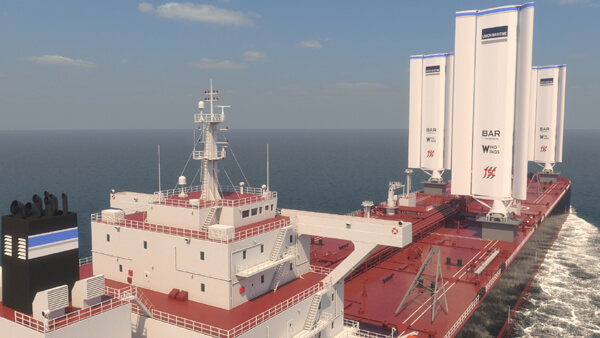
The vessels are due for delivery in July and November 2025, according to Union Maritime as part of its shipbuilding program that has a total of six LR2 tankers on order as well as two MRs (49,000 dwt). The LR2 tankers will each be 114,000 dwt with the first two coming from China fitted each with three rigid sails. BAR explains that its WindWings operate in conjunction with a route optimization system that adjusts the rigid sails based on wind conditions, vessel speed, and course, all without compromising the vessel’s speed.
Shipping companies are looking to the available technologies and retrofit to ships to help in achieving the first stage of the required reduction in emissions. Most feel that the 30 percent target can be achieved with available technologies such as route optimization, retrofits on bows and propellers as well as adding stern ducts, and using paint and coatings to reduce hull friction. Adding wind-assisted propulsion adds another element that an increasing number of shipping companies are exploring.
BAR highlights that this order comes after its 2023 installations of the rigid sails on the bulkers Pyxis Ocean and Berge Olympus. The company has also entered into an agreement with manufacturing partners CM Energy Tech, a company associated with China Merchants Industry Holding. They will be margining the procurement and construction of WindWings and their installation throughout shipyards in Asia.
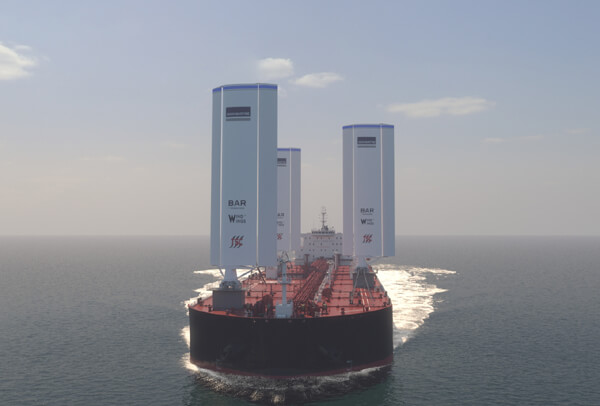
Austal USA Launches First Production Hull of 65-Foot Saildrone Series
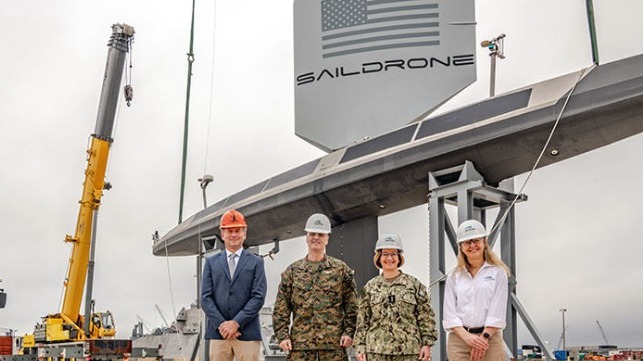
The California-based autonomous boat company Saildrone has partnered with shipbuilder Austal to start production of its extra-large sail-powered vessel, the Surveyor.
Saildrone's orange drones are a familiar sight in the research community, and have been used on long-distance blue water operations for years. They have self-deployed from California for surveys in the Bering Sea, ventured into Antarctic and High Arctic waters, and traced out thousands of miles of trackline in the Central Pacific, without intervention or resupply. The Navy has also trialed them in the Persian Gulf and Strait of Hormuz for surveillance applications, with some success (except for a brief capture-and-abduction incident involving Iranian operatives). To date, Saildrone's devices have logged more than 1.1 million nautical miles sailed and 32,000 days of sea time.
Building on the legacy of its original 23-foot design, Saildrone has created a 65-foot model that can carry a much larger payload. The new Surveyor can support full ocean depth multibeam sonar surveys to 11,000 meters of water, longer-range surveillance, and defense and security payloads to respond to "maritime threats." It has a displacement of 15 tonnes, putting it in the same size class as a large ocean racing yacht.
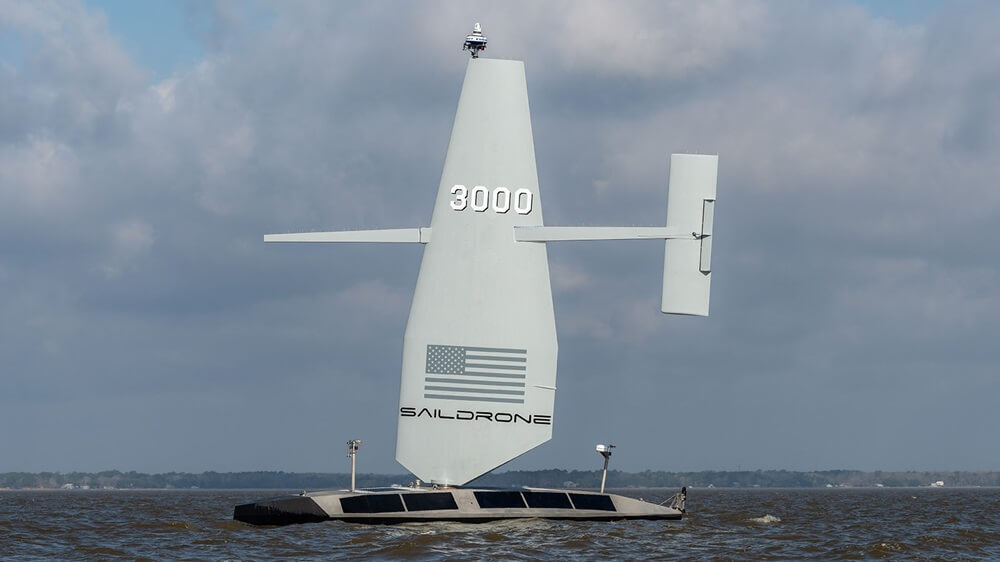
Courtesy Saildrone
Surveyor fits neatly into the Pentagon's plans to buy large volumes of less-expensive, high-performance drones to compete in the Western Pacific. The first production model was launched on Monday, with Chief of Naval Operations Adm. Lisa Franchetti in attendance, and Austal plans to deliver one every six weeks on its aluminum production line.
“Using unmanned assets helps put more players on the field by freeing up manned assets for more specific and important tasks,” said Adm. Franchetti. “It’s good to see high tech industry partnering with the traditional shipbuilding industrial base to rapidly deliver cutting-edge products at scale.”
Saildrone has also reached an agreement with Austal Ltd. to look for opportunities to build its platforms in Australia for Indo-Pacific customers.
No comments:
Post a Comment